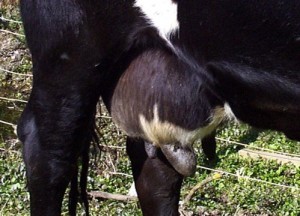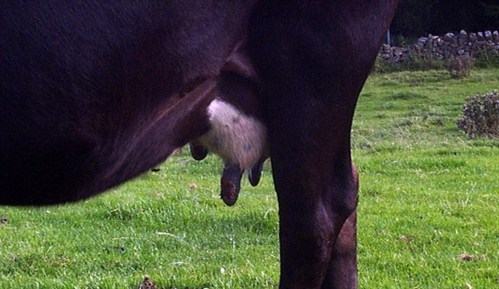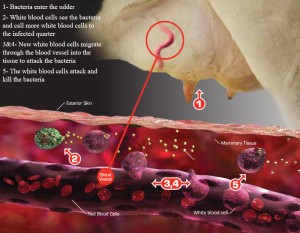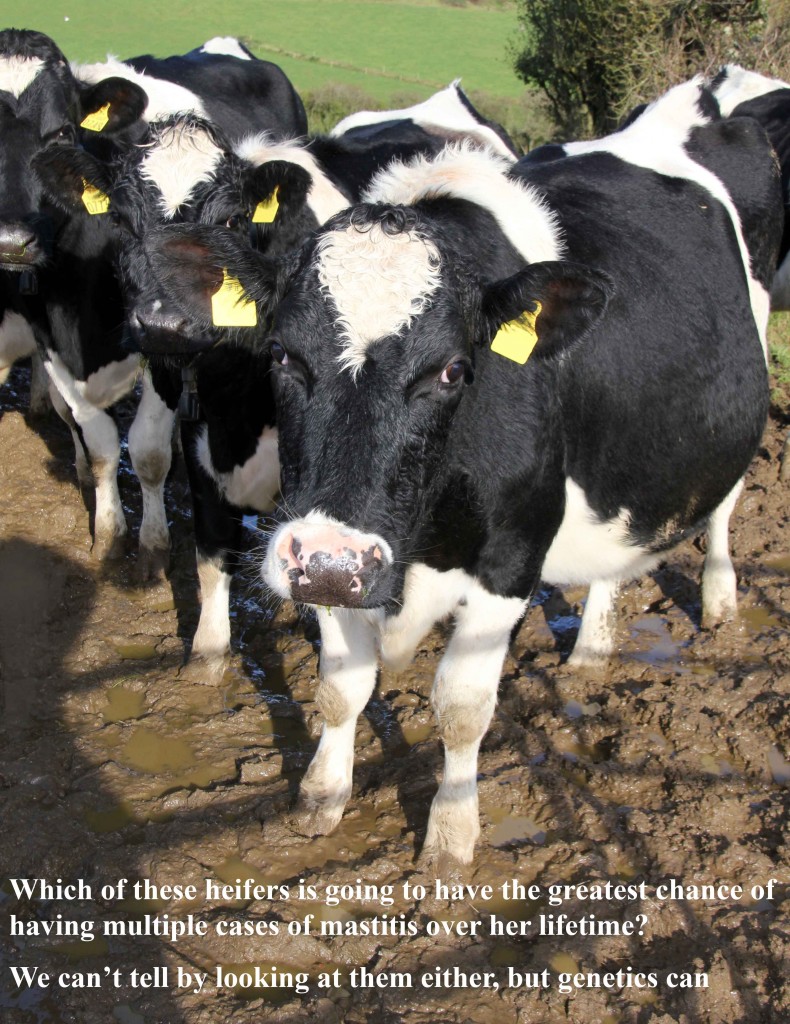Below are some questions and answers on the topic of mastitis.
What is mastitis?
Mastitis is inflammation of the udder. One, two, three, or all four quarters can be affected. This is a priority illness in Ireland because it is so costly to Irish dairy farmers. In 2013 mastitis was estimated to cause a net farm profit decrease of €19,504 for a 40 hectare farm as SCC increased from <100,000 cells/mL to >400,000 cells/mL (Examining the impact of mastitis on the profitability of the Irish dairy industry, Geary et al 2013). Mastitis occurs when bacteria enter the quarter through the teat canal, during milking or directly from the environment.

Why does mastitis cost so much?
– The biggest cost of mastitis is the fact that infected cows produce less milk. They are also more likely to be culled early, get pregnant less quickly and lose more body condition. Want to estimate how much more money you can make from a lower cell count? Click here to go to the AHI’s CostCheck Economic calculator
What causes mastitis?
Mastitis occurs when bacteria (or bugs) get into the udder which causes an infection. These bacteria can be introduced many different ways such as: poor milking procedures, milking machine faults, teat injuries, and direct exposure to bacteria in the environment.
Is mastitis only caused by one bacteria?
No, mastitis can be caused by a number of different bacteria, such as: Staphylococcus aureus (Staph), Streptococcus uberis (Strep), Escherichia coli (E. coli), Enterobacter aerogenes (Enterobacteria), and different Klebsiella species to name a few.
The most common bacteria causing mastitis in Ireland are Staph aureus, Strep uberis, and E. coli..

What makes summer mastitis different?
Summer mastitis is an inflammation of the udder, but it is different because it usually occurs in dry cows or a susceptible pregnant heifer. The bacteria that cause summer mastitis are usually spread by flies and dry cow therapy is recommended as the best method of prevention.

What clinical signs are associated with mastitis?
– The most visible sign of mastitis is a change in the milk such as clots, looking watery and/or bloody. The udder may also be warm, swollen and painful to the touch and is sometimes accompanied by fever, depression, and lack of appetite. All cows with mastitis will also have an increase in Somatic Cell Count (SCC).
Will my cow always show clinical signs of mastitis (changes in the milk, udder, and/or cow) when she has it?
No, many cows can have Subclinical mastitis, which means the cow is infected but has no visible signs. It is only detectible by measuring the Somatic Cell Count (SCC). This is why it is important to pay attention to your SCC each time you get a bulk tank SCC result, and when you milk record.
What is SCC and what does it mean?
SCC or somatic cell count is a measurement on milk that determines the number of white blood cells that are in the milk. White blood cells are part of the animals (and our!) immune system. White blood cells naturally circulate throughout the body but when a cow gets an infection white blood cells pour into the location and try to get rid of the infection. So when a cow has an infected quarter, the white blood cells increase in that area, in an effort to clear out the invading bacteria-hence you see an increase in the SCC. For more info on SCC’s Click here to go to the “All about Somatic Cell Counts” Page

Ok, so what is an acceptable SCC level?
In general, any cow with an SCC over 200,000 cells/mL probably has at least 1 infected quarter-don’t ignore her, investigate!
What if my cow just has a high SCC all the time?
If your cow has a high SCC all the time, it’s because she is infected all the time! Milk any infected cow last so that your risk of spreading infection is minimized. Treatment of cows that continually have an infected quarter(s) is often unsuccessful, so not always advisable This is something you should discuss with your veterinarian, to decide the best way to deal with her.
Is mastitis contagious?
Yes, many of the bacteria can spread from cow to cow during the milking process. Mastitis-causing bacteria can be divided in two groups: environmental and contagious. Environmental bacteria usually come from the environment and therefore are spread outside of the milking parlor, while contagious bacteria generally spread during milking. This is typically a guideline and not a rule because some environmental bacteria can spread during milking and some contagious bacteria spread outside of milking, but it’s a good starting point.
Is mastitis heritable?
We have recently begun running heritability estimates on mastitis and we have definitely found a heritable component which we hope to exploit in the near future. More to come on this topic in future posts and pages!
What can I do to help prevent mastitis in my herd?
There are lots of sources of good quality, proven information that will help you prevent mastitis.
Attend a CellCheck Farmer Workshop to understand some of the daily routines that can reduce the risk of mastitis in your herd. Contact your local Co-op adviser for more information, or click here to go to the website.
Farm relief services are also running a 2 day FETAC Level 6 course on milking skills (click here for more info!). Also, check out the videos created by AHI- CellCheck milking tips (Click here to go to their page) and the CellCheck Complete Farm Guidelines for Mastitis Control Manual (Click here to go to its page)
A poor milking routine is one of the major factors that cause mastitis. Some of the most common problems in the routine are:
- Milkers not wearing clean gloves
- Not covering the whole barrel of the teat with teat disinfectant after milking
- Leaving the liners in for more than 2,000 milkings
Cleanliness and good advice are also part of keeping your herd mastitis free
- Clean, dry teats have the lowest chance of becoming infected, so keep your cows as clean and dry as possible
- Use teat-sealer or dry cow therapy to reduce your chance of getting summer mastitis
- Talk to your vet about dry cow treatments to find out what is best for your farm
- Avail of programs like CellCheck and/or get help from your agriculture adviser
Are there any programs to help with mastitis?
Yes! AHI has developed the Cell Check program. Click here for more information.

